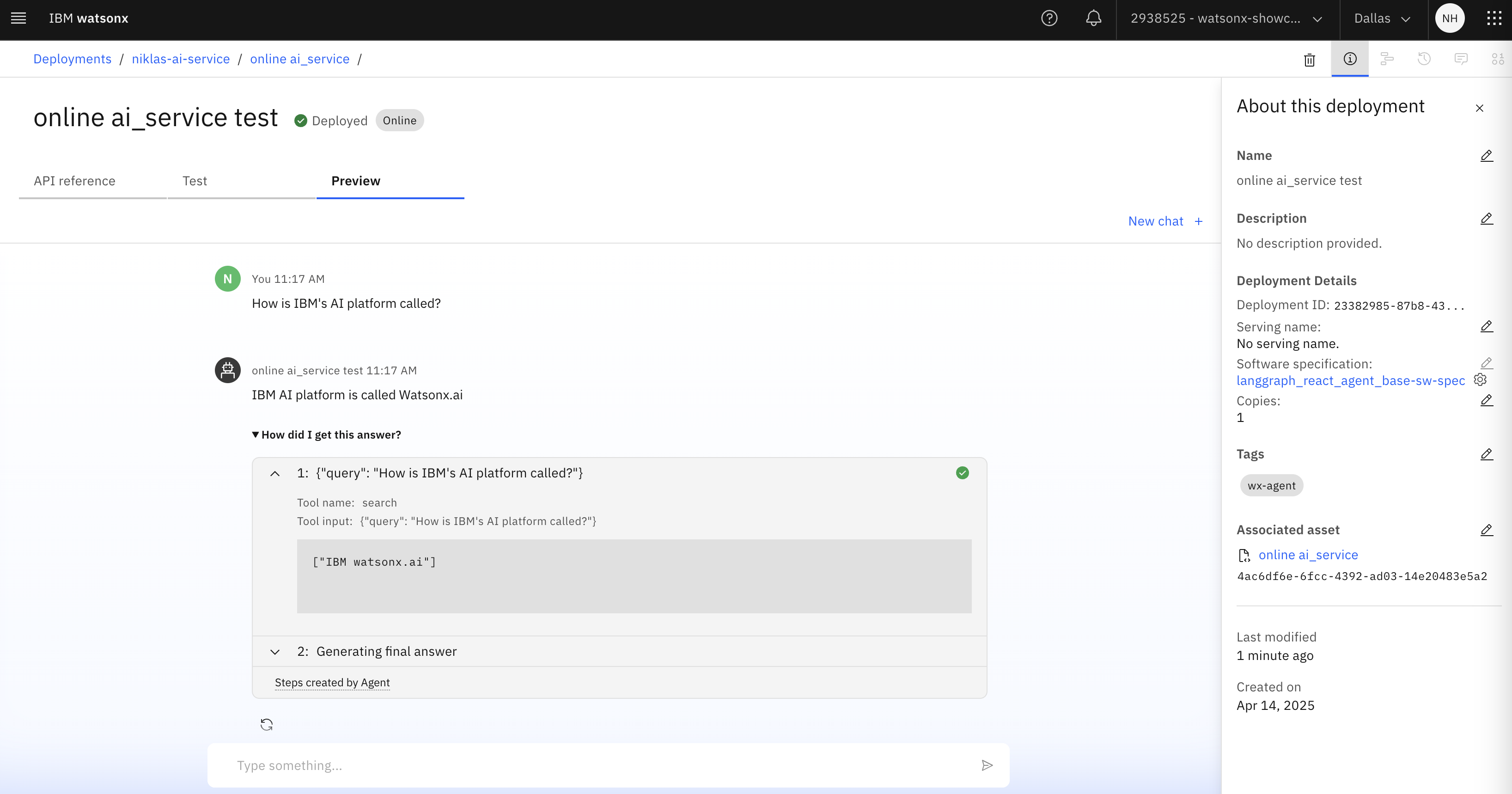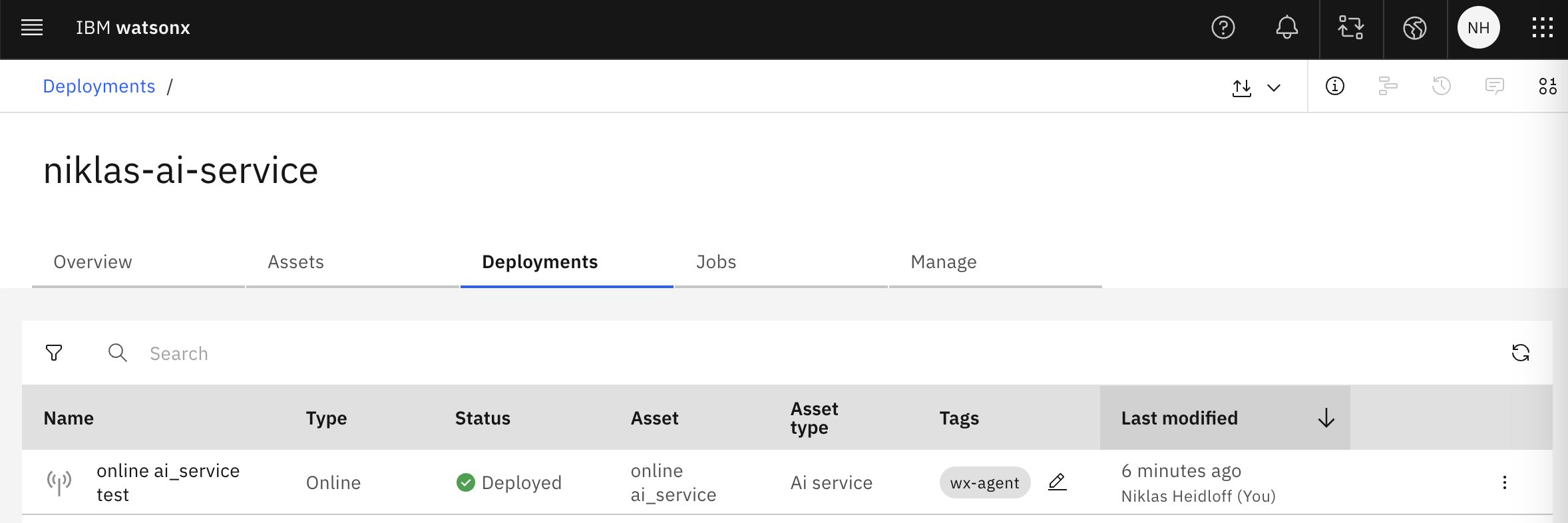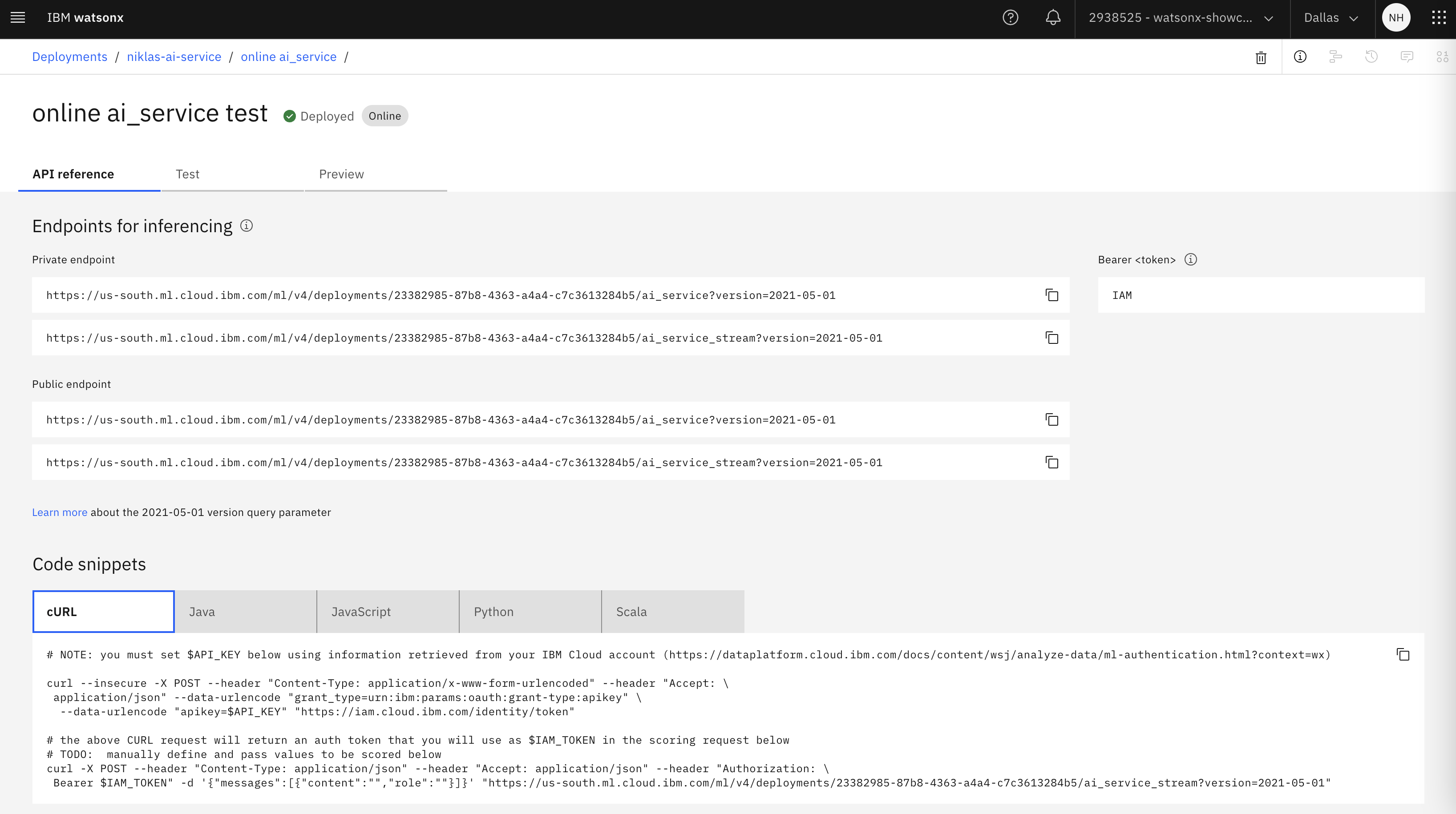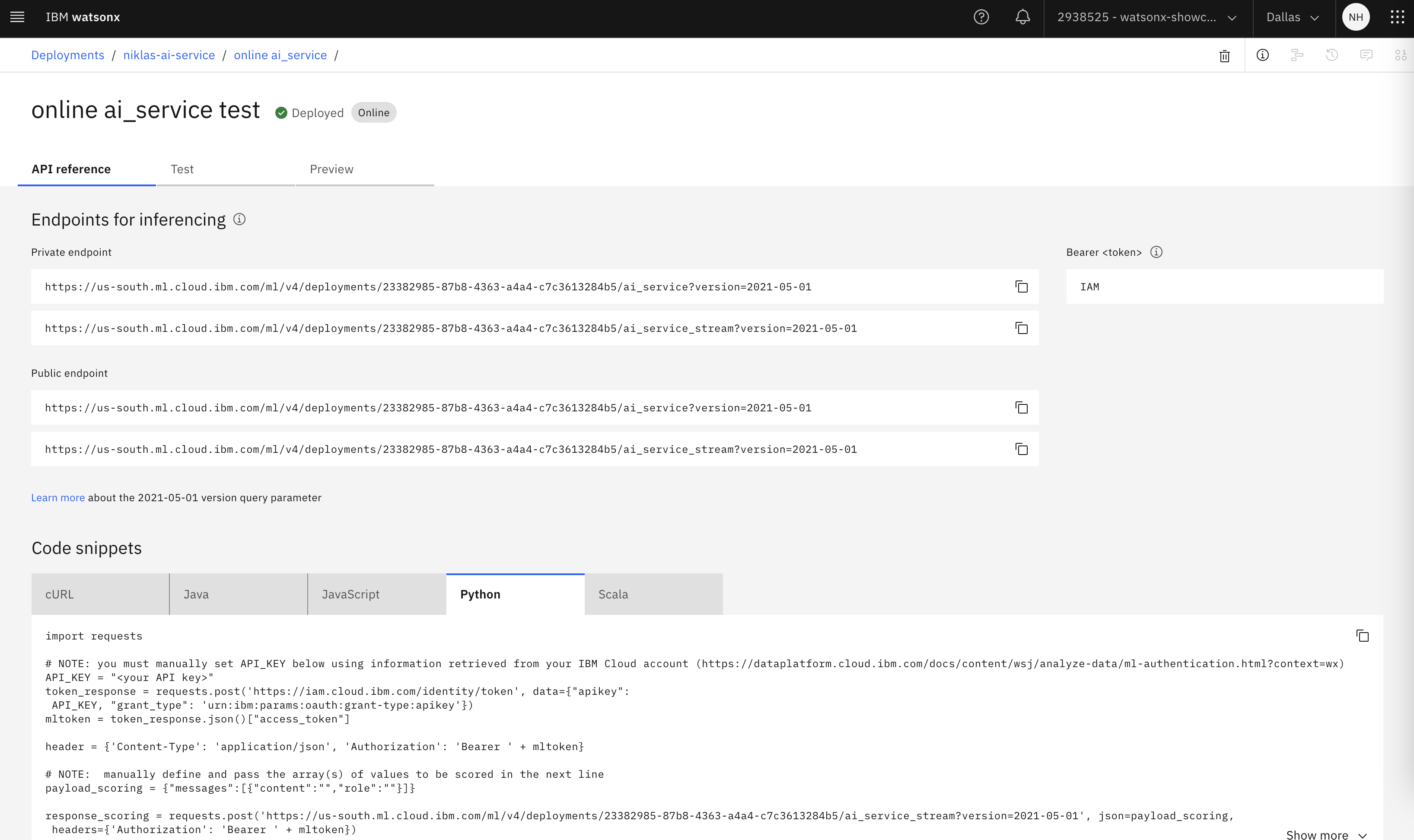Custom Python code for agentic applications can be deployed on watsonx.ai so that various agentic applications can be managed consistently and accessed securely. There are templates to help developers and AI Engineers to get started quickly.
Watsonx.ai comes with a feature called ‘AI Service’ which allows packaging and deploying custom Python code similarly to containers. My post Deploying Agentic Applications on watsonx.ai describes the core concepts.
Watsonx.ai services like Agent Lab generate code that contains and deploys AI services. This code can be used to get started, but since everything is in one notebook, the code is not trivial to manage. To utilize code control systems and CI/CD pipelines, IBM proposes a certain project structure.
Templates
There are various templates for different agent frameworks and the list is growing.
- Base
- autogen-agent
- beeai-framework-react-agent
- crewai-websearch-agent
- langgraph-react-agent
- llamaindex-websearch-agent
- Community
- langgraph-agentic-rag
- langgraph-arxiv-research
- langgraph-tavily-tool
AI Service
The Python code needs to be wrapped in an AI Service and needs to provide the functions ‘generate’ and ‘generate_stream’. The LangGraph example comes with an example agent and an example tool.
1
2
3
4
5
6
7
8
9
10
11
12
13
14
15
16
17
18
def deployable_ai_service(context, url = None, space_id = None, model_id = None, thread_id = None):
from typing import Generator
from langgraph_react_agent_base.agent import get_graph_closure
from ibm_watsonx_ai import APIClient, Credentials
...
client = APIClient(
credentials=Credentials(url=url, token=context.generate_token()),
space_id=space_id,
)
graph = get_graph_closure(client, model_id)
...
def generate(context) -> dict:
...
return execute_response
def generate_stream(context) -> Generator[dict, ..., ...]:
...
return generate, generate_stream
Project Structure
Projects have the following structure:
- langgraph-react-agent
- src
- langgraph_react_agent_base
- agent.py
- tools.py
- langgraph_react_agent_base
- schema
- ai_service.py
- config.toml
- pyproject.toml
- src
The ‘config.toml’ file contains the following configuration:
- API key
- Watsonx Endpoint
- Space ID
- Model ID
- Custom key/value pairs and credentials
Custom key/value pairs can be used as well as credentails.
CLI and Python
There is a CLI and Python code to deploy AI services.
1
python scripts/deploy.py
Code can be tested locally and the deployed code can be invoked remotely:
1
2
python examples/execute_ai_service_locally.py
python examples/query_existing_deployment.py
Deployment
The deployment creates a code asset and the AI service.
There is also a nice chat user interface to try the AI service in a playground - see the image at the top of this post.
API
After the deployments endpoints are provided including authentication.
There are also examples how to invoke the endpoint from several programming languages.
Next Steps
Here are some resources:
- Deploying Agentic Applications on watsonx.ai
- Generating Agentic Applications with watsonx.ai Agent Lab
- Resource Specifications for Custom Code in watsonx.ai
- Predefined software specifications
- Predefined hardware specifications
- Customizing runtimes with external libraries and packages
To learn more, check out the Watsonx.ai documentation and the Watsonx.ai landing page.





